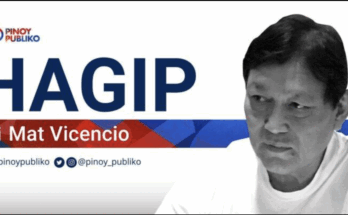With all the traveling that President Bongbong Marcos has done since he assumed office on June 30 last year, friends often ask me if I miss my Malacañang days. Of course, I do. It would be hypocritical of me if I said I do not. I miss the presidential foreign trips and all the perks that go with it.
For readers who may not be aware of my professional background, I spent 11 years in Malacañang from 1991 to 2002 as a presidential writer. Fortunately, I was assigned as President Fidel V. Ramos’ close-in writer/reporter. As such, I had the privilege of traveling with the chief executive during his provincial and foreign trips.
Except for his first trip to Brunei and Thailand in 1992, China in 1993, Vietnam in 1994, and his last official trip to Senegal in 1998, I was with the rest of the President’s overseas trips. I was lucky to see the world while in Malacañang. Never in my wildest dreams did I imagine that I would be traveling to 40 countries in a span of six years.
From 1992-1998, PFVR was the country’s No. 1 salesman. He successfully pursued economic diplomacy that put the Philippines back on the radar screen of global investors. He embarked on 64 overseas trips to 42 states/countries, generating close to $30 billion in new investments at the time and strengthening the Philippines’ reputation as the “Gateway to Asia and the Pacific.”
While enjoying these trips as part of the presidential delegation, it was no joke as we really worked hard – from the President to the members of his Cabinet and to us his close-in staff. I wrote about the experience in my book “Behind the Red Pen” My Adventures with FVR.”
Until President Gloria Macapagal-Arroyo came along, PFVR had the most number of foreign travels. Per the Philippine Official Gazette, PGMA now holds the record as the most traveled president, post-EDSA ’86. She has visited 44 countries with a total of 127 foreign trips during his nine-year presidency from 2001 until 2010.
Going back to PBBM, in just 15 months in office, he has made a total of 14 international trips to 11 countries. If this trend continues (and most likely it will), he will be the most traveled president when his term ends in 2028, beating the record of his own uncle, PFVR, and PGMA.
This is also the path that President Marcos wants to tread for himself—to be the Philippines’ premier salesman in pursuit of economic diplomacy.
Since July 2022, the President traveled once to Belgium, Cambodia, China, Japan, Malaysia, Switzerland, Thailand, and the United Kingdom. He went twice to the United States while Indonesia and Singapore had him thrice. More trips are planned. He is set to travel this month to the Kingdom of Saudi Arabia, another trip to the US next month for the APEC Leaders Summit, and to France within the first half of 2024.
And the people ask: how much exactly does it cost to finance these presidential trips in 2024? Well, based on the Executive Branch’s National Expenditure Program, Malacañang has allocated a staggering P1.408 billion budget to fund PBBM’s local and foreign missions. It is a 58 percent increase from the current year.
Executive Secretary Lucas Bersamin, representing the Office of the President, justified this request during a budget deliberation at the House of Representatives.
“The budget adjustment we seek … accommodates the logistical requirements of honoring invitations from foreign leaders to visit their countries and the making of diplomatic initiatives which will yield job-creating investments that will hasten our post-pandemic economic recovery,” he pointed out.
The Lower House has approved the proposed P10.7-billion OP budget which included the allocation for foreign travel. The same thing happened when the OP’s budget was tackled at the Senate last Wednesday, October 11. With many of the senators perceived as Malacañang allies, the budget did not face heavy scrutiny in the name of “parliamentary courtesy.”
Record breaking, indeed, as the Senate finance committee has approved it in 20 minutes.
Zeroing in on foreign trips, considering the existing economic condition, are these really necessary?
I personally believe that as the country’s chief diplomat and No. 1 salesman, PBBM must continue his international engagements. So as not to be perceived as callous or insensitive, the President and the Department of Foreign Affairs (DFA) could cut down the trips significantly by prioritizing which countries to visit.
When the Persian Gulf War erupted in 1990, then President Cory Aquino canceled all her foreign trips and realigned the budget for more pressing things. It was also her way of sympathizing with the Filipino people who were affected by the Middle East conflict due to the soaring prices of petroleum products and the series of increases in the prices of basic commodities. She only resumed her trip in January 1992 when she went to Singapore for the 4th ASEAN summit. That was also her final foreign travel.





